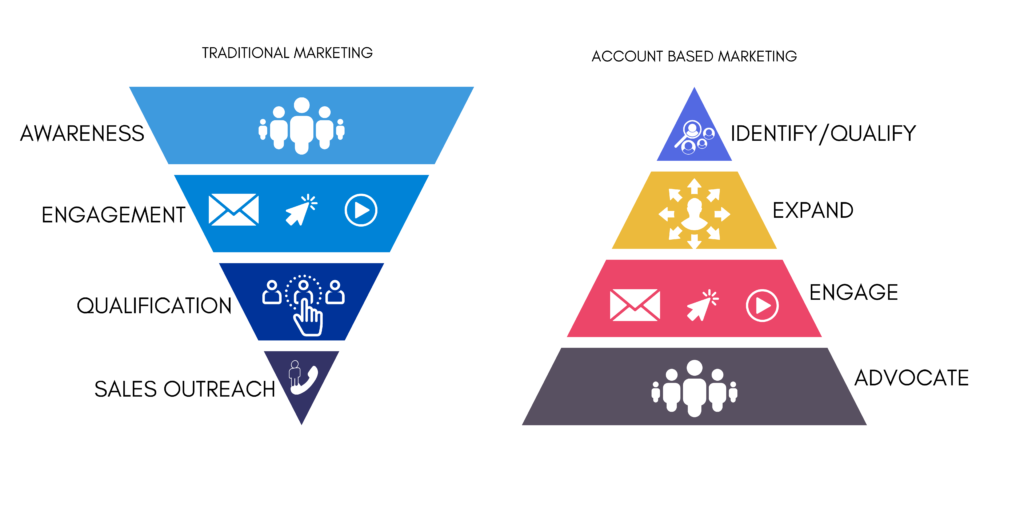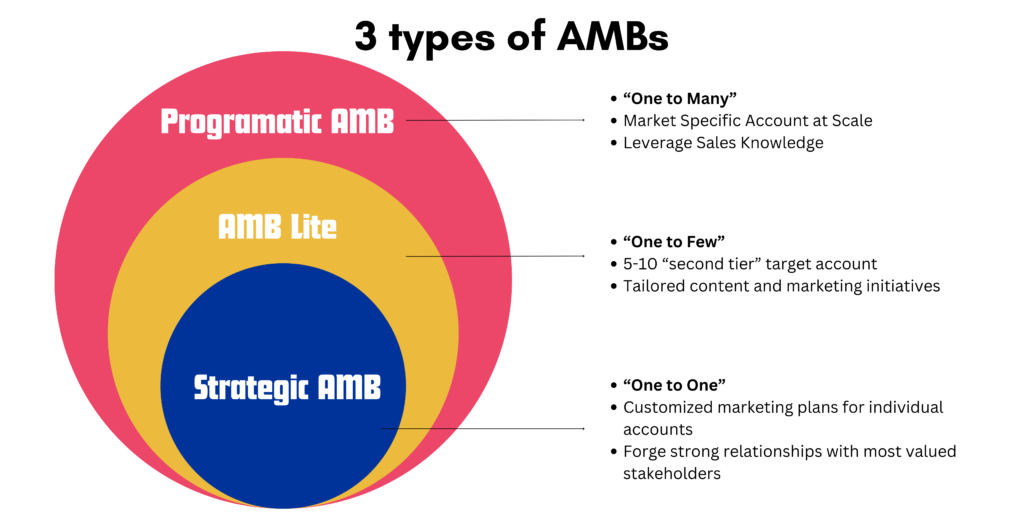Achieve success with Account Based Marketing

Account Based Marketing - A must-have guide for the marketers
In the vast ocean of marketing strategies, there’s one fishing technique that stands out — Account Based Marketing (ABM). If you’re tired of casting nets hoping to catch some fish, it’s time to pick up a spear and aim for your target. Let’s dive into what ABM is all about and why it should be your go-to strategy.

The current picture of Marketing Today
Picture this: the average email click-through rate is a measly 2.6 percent, while direct mail returns hover around 5 percent. Even a stellar social media campaign struggles to convert at less than 1 percent. Why the dismal numbers? It’s simple—many marketing campaigns lack proper customer research, personalized content, or targeted segmentation. They throw out the bait and hope for a bite.
What is Account Based Marketing?
Account-Based Marketing (ABM) also known as key account marketing flips the script. It’s not about casting a wide net and hoping for the best; it’s about precision targeting and personalized engagement. ABM is the art of crafting tailored marketing efforts to address individual key accounts’ unique needs and interests. Think of it as spearfishing—aiming directly for the prized catch.
What is the goal of ABM?
Here’s the deal: ABM isn’t just about reeling in any old fish. It’s about landing the big one—the ideal client who will stick with you month after month. ABM brings marketing and sales together to pursue these high-value prospects, resulting in personalized buying experiences and stronger, more meaningful relationships.
What is the difference between marketing and Account Based Marketing?
Marketing and Account-Based Marketing (ABM) are both strategies used to promote products or services, but they differ significantly in their approach and focus.

- Target Audience
- Marketing: Traditional marketing typically targets a broad audience, aiming to reach as many potential customers as possible. It often involves casting a wide net and using generalized messaging to appeal to a large group of people.
- ABM: Account-based marketing, on the other hand, focuses on targeting specific high-value accounts or companies. Instead of reaching out to a broad audience, ABM identifies key accounts and tailors marketing efforts to address the specific needs and interests of those accounts.
- Personalization
- Marketing: Traditional marketing often relies on generalized messaging and content that may not be highly personalized to individual recipients. While some segmentation may occur, the level of personalization is typically lower compared to ABM.
- ABM: Personalization is a core aspect of ABM. The strategy involves creating highly tailored content and messaging that resonate with the unique challenges, goals, and pain points of targeted accounts. ABM aims to deliver a personalized buying experience for each account, increasing the likelihood of successful conversions.
- Approach
- Marketing: Traditional marketing strategies often follow a funnel approach, where prospects are guided through stages such as awareness, consideration, and decision-making. The focus is on attracting a large pool of prospects and nurturing them until they convert into customers.
- ABM: ABM takes a more account-centric approach, focusing on building relationships and engaging with specific target accounts throughout the entire buyer’s journey. It involves aligning marketing and sales efforts to identify, target, and nurture key accounts from the outset.
- Measurement and ROI
- Marketing: Measuring the ROI of traditional marketing efforts can sometimes be challenging, especially when targeting a broad audience. Metrics such as click-through rates, conversion rates, and overall engagement are commonly used to assess performance.
- ABM: ABM offers more straightforward measurement and ROI tracking since it focuses on a select group of high-value accounts. Marketers can closely monitor the success of campaigns targeting specific accounts, allowing for more accurate attribution and analysis of results.
- Collaboration between Sales and Marketing
- Marketing: While collaboration between sales and marketing teams is important in traditional marketing, the level of alignment may vary. Sales and marketing teams may have separate goals and strategies, leading to potential disconnects.
- ABM: ABM requires close collaboration between sales and marketing teams. Both departments work together to identify, prioritize, and engage with target accounts effectively. ABM aligns sales and marketing efforts towards a common goal of acquiring and retaining key accounts.
What does Account Based Marketing do?
ABM isn’t just a theory; it’s a proven strategy with real-world applications. From webinars tailored to niche audiences to personalized PPC campaigns, ABM allows you to engage with key accounts on their terms. Think VIP events, targeted social media ads, and customized email campaigns designed to reel in the big fish.
Why go the ABM route? For starters, it brings marketing and sales teams together, shortens the sales cycle, and saves time and money through personalized engagement. Plus, it makes measuring ROI a breeze—no more casting a wide net and hoping for the best.
What are the types of Account Based Marketing?
Account-Based Marketing (ABM) can be categorized into several types based on the scope and approach of the strategy. Here are four common types:

Strategic Account Based Marketing (One-to-One ABM):
– This type of ABM involves targeting individual high-value accounts with highly personalized and customized marketing efforts.
– Strategic ABM is suitable for companies with a relatively small number of key accounts, where each account represents significant revenue potential.
– Marketing and sales teams collaborate closely to create tailored campaigns and experiences for each targeted account.
ABM Lite (One-to-Few ABM)
– ABM Lite involves targeting a small group of similar accounts, typically with shared characteristics or attributes.
– While still personalized, ABM Lite is less resource-intensive than Strategic ABM since it focuses on a few accounts rather than individual ones.
– This approach is ideal for companies with slightly larger target account lists or those looking to scale their ABM efforts gradually.
Programmatic ABM (One-to-Many ABM)
– Programmatic ABM leverages technology and automation to target a larger group of accounts with personalized messaging at scale.
– Using data-driven insights and algorithms, Programmatic ABM identifies and segments accounts based on criteria such as firmographics, behavior, and intent.
– While less personalized than Strategic ABM or ABM Lite, Programmatic ABM allows for efficient targeting and engagement across a broader set of accounts.
ABM Lite with Insights (One-to-Some ABM)
– This hybrid approach combines elements of ABM Lite with data-driven insights to target a select group of accounts with tailored messaging.
– ABM Lite with Insights focuses on accounts that share common characteristics or behaviors, allowing for more personalized engagement.
– By leveraging insights from customer data, companies can enhance the effectiveness of their ABM efforts and prioritize accounts with the highest potential for conversion.
Account-based marketing isn’t just another marketing buzzword—it’s a game-changer. By targeting high-value accounts with precision and personalized engagement, ABM allows you to reel in the big fish and build stronger, more meaningful relationships. So why settle for casting nets when you can wield a spear? Dive into ABM and unlock a world of marketing success.





